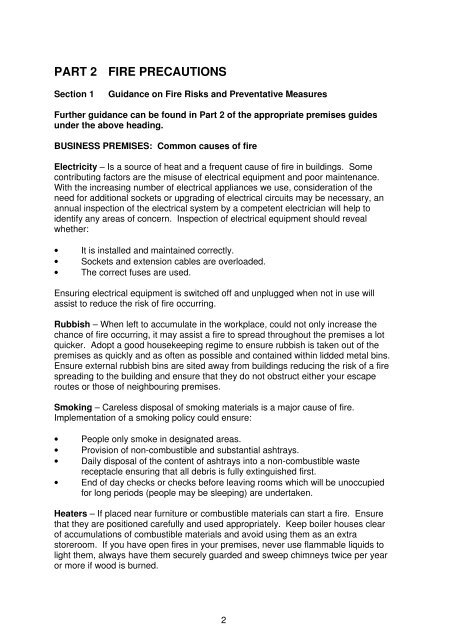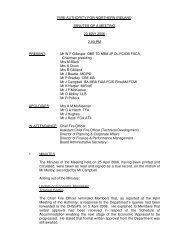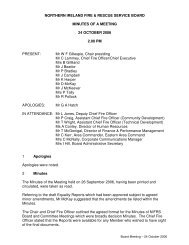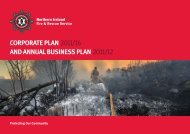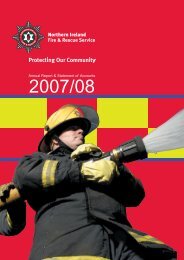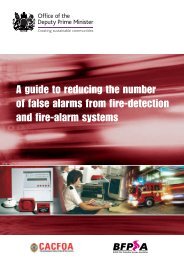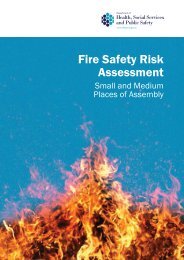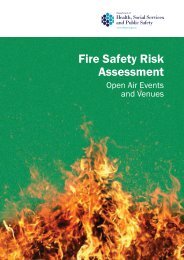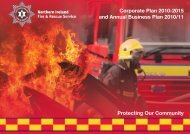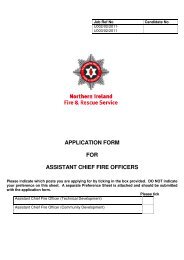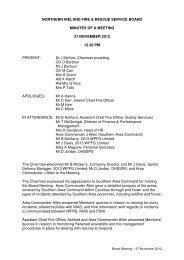Fire Safety Log Book - Northern Ireland Fire & Rescue Service
Fire Safety Log Book - Northern Ireland Fire & Rescue Service
Fire Safety Log Book - Northern Ireland Fire & Rescue Service
- No tags were found...
You also want an ePaper? Increase the reach of your titles
YUMPU automatically turns print PDFs into web optimized ePapers that Google loves.
PART 2 FIRE PRECAUTIONSSection 1Guidance on <strong>Fire</strong> Risks and Preventative MeasuresFurther guidance can be found in Part 2 of the appropriate premises guidesunder the above heading.BUSINESS PREMISES: Common causes of fireElectricity – Is a source of heat and a frequent cause of fire in buildings. Somecontributing factors are the misuse of electrical equipment and poor maintenance.With the increasing number of electrical appliances we use, consideration of theneed for additional sockets or upgrading of electrical circuits may be necessary, anannual inspection of the electrical system by a competent electrician will help toidentify any areas of concern. Inspection of electrical equipment should revealwhether:• It is installed and maintained correctly.• Sockets and extension cables are overloaded.• The correct fuses are used.Ensuring electrical equipment is switched off and unplugged when not in use willassist to reduce the risk of fire occurring.Rubbish – When left to accumulate in the workplace, could not only increase thechance of fire occurring, it may assist a fire to spread throughout the premises a lotquicker. Adopt a good housekeeping regime to ensure rubbish is taken out of thepremises as quickly and as often as possible and contained within lidded metal bins.Ensure external rubbish bins are sited away from buildings reducing the risk of a firespreading to the building and ensure that they do not obstruct either your escaperoutes or those of neighbouring premises.Smoking – Careless disposal of smoking materials is a major cause of fire.Implementation of a smoking policy could ensure:• People only smoke in designated areas.• Provision of non-combustible and substantial ashtrays.• Daily disposal of the content of ashtrays into a non-combustible wastereceptacle ensuring that all debris is fully extinguished first.• End of day checks or checks before leaving rooms which will be unoccupiedfor long periods (people may be sleeping) are undertaken.Heaters – If placed near furniture or combustible materials can start a fire. Ensurethat they are positioned carefully and used appropriately. Keep boiler houses clearof accumulations of combustible materials and avoid using them as an extrastoreroom. If you have open fires in your premises, never use flammable liquids tolight them, always have them securely guarded and sweep chimneys twice per yearor more if wood is burned.2


